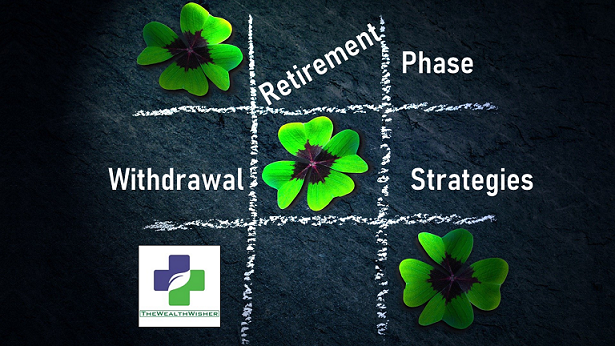We all know – Retirement is the Withdrawal Phase. If you are not on pension, you can plan your annuity from your investments. This can be done using the below methods as Withdrawal Strategies During Retirement Phase. This ensures needs regular income & planning future goals. One has to check the expenses now, expenses likely to be in future, taxation & other considerations.
Today let’s discuss the Withdrawal Strategies During Retirement Phase.
Retirement is a goal if you are planning for it. In the same way, the accumulation is planned, one needs to plan the distribution also. Following Strategies of ma mix can be used as per requirement.
Withdrawal Strategy During Retirement Phase
Systematic Withdrawal Strategy
This is one of the most popular strategies adopted globally. This strategy involves investing in assets such as equities, debt, gold, etc., and then selling them periodically to generate cash flows while the rest remains invested.
The systematic withdrawal strategy takes a total returns approach, which seeks greater long-term returns with portfolio re-balancing done every year.
Here, the withdrawal rate depends on the risk appetite, returns on investment, and the time horizon.
So a withdrawal of 4-5% is a safe withdrawal rate strategy, with a portfolio of 50 percent in equities and 50 percent in debt for 30 years.
The 4 percent safe withdrawal rate strategy is popular in the United States and is based on their market scenario as they have inflation way below 4%. However, Indian markets are quite different from the developed US markets.
Here the inflation is around 3-5%. So a withdrawal return of 5-6% is considered safe as Indian markets also make more than this rate (historical average)
The good thing about this strategy is that it encourages long-term investment. This gives an individual a better chance to gain a good upside.
Risk in Systematic Withdrawal Strategy
The first risk is that if the equity market goes through a sharp correction, during your yearly re-balancing, you will have to allocate more to equity and less to debt. This may force you to lower your withdrawal rate.
Second Risk is What will happen if you have poor market returns early in retirement. This can cause a portfolio to quickly deplete if you need to take significant withdrawals in the early year during retirement.
This strategy is effective when you have moderate risk tolerance and can adjust your spending.

Flooring Income Strategy
This strategy is completely different from the risk and returns investment strategy adopted by the systematic withdrawal strategy. Here the retirement corpus is divided between the needs and wants.
The flooring income strategy believes that the needs in the retirement phase should be met from a secured source. Means a heavy debt investment for Needs.
While the rest of the corpus is to be invested in equities. This is used for wants if the growth is as per expectations.
This strategy assumes that you can risk the non-needed part.
The biggest benefit of this strategy is that it secures all the needs by investing in secure investment vehicles and the rest is invested in the markets.
This strategy provides an opportunity to increase his/her wealth over time if the markets perform well.
This strategy invests the remaining amount in equity for the long-term, which helps it to grow without any interruptions.
Risk in Flooring Income Strategy
The risk is Markets. It invests a major part of the retirement corpus in equities without any further diversification. This increases the overall risk.
Bucket Investment Strategy
Bucket strategy is more related to emotions and psychology, wherein different buckets of goals are created based on duration and then investments are made or allocated depending upon the duration left for the goal and risk profile of the investor.
It is also known as Time Segmentation Strategy.
You have certain financial goals in retirement like regular income, vacation, medical, charity, etc., and all are spread across various durations. Some are for a short duration, some for medium, and some are for a long duration. For short-duration goals, investments are made in secured instruments, for medium duration goals investments are made in a mix of secured and growth instruments and for a long duration, growth investments are preferred.
The best part of this strategy is that you can account for all your financial goals and make investments for those goals accordingly. This strategy makes sure that you stick to the strategy to achieve your objectives, which also helps you to live in peace as your financial goals are being taken care of along with your required regular income.
Risk in Bucket Strategy
The investments are based on goal tenures and investor’s risk profile, which for aggressive investors can be appealing, but for conservative investors, it may not prove to be an appealing deal.
Can We Use a Combination?
 Here, one can –
Here, one can –
Consider expenses of some fixed time – say three years is invested in debt and the remaining corpus goes into equity investment. This ensures that your three years of required regular income stays in safe investment avenues and the remaining moves into equity or it can even be a mix of equity and debt.
Further, it can be customized by creating buckets like health or some immediate goals like the marriage of a son, etc.
Here some part deals with capital protection also, which is the biggest concern in retirement, and the other part helps to beat inflation.








